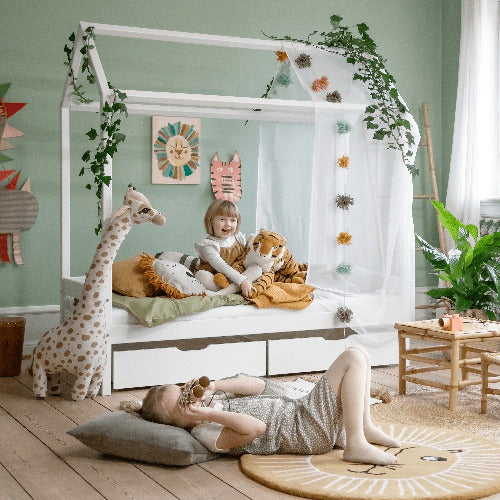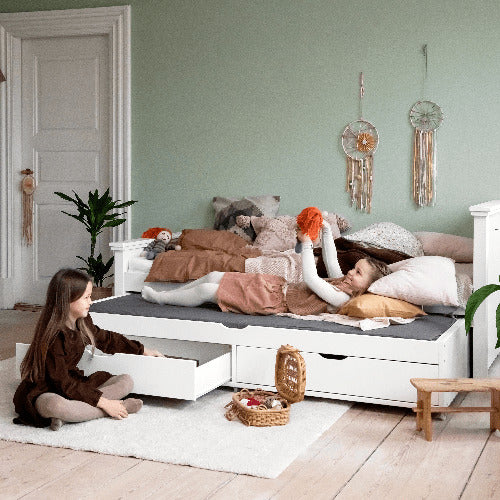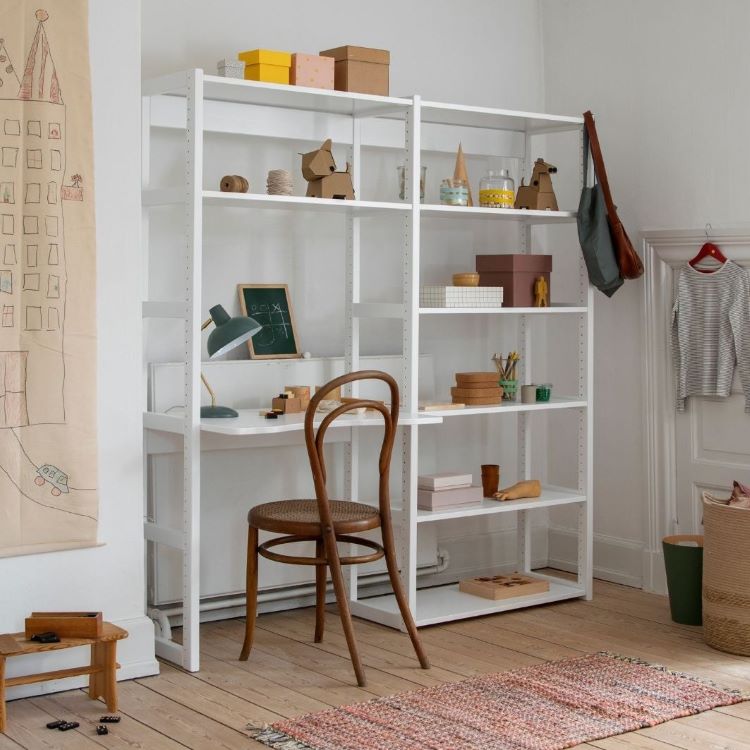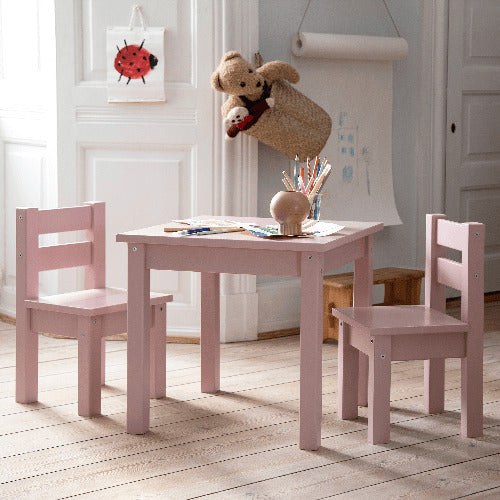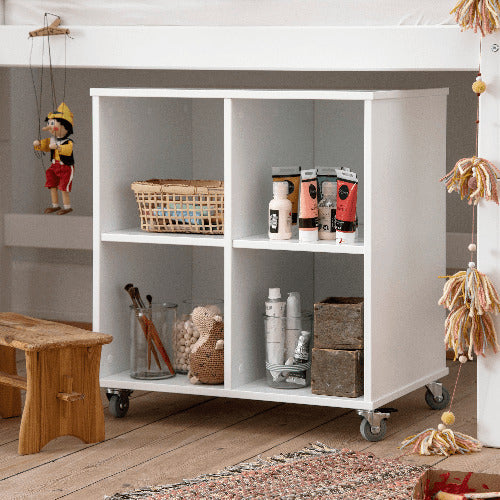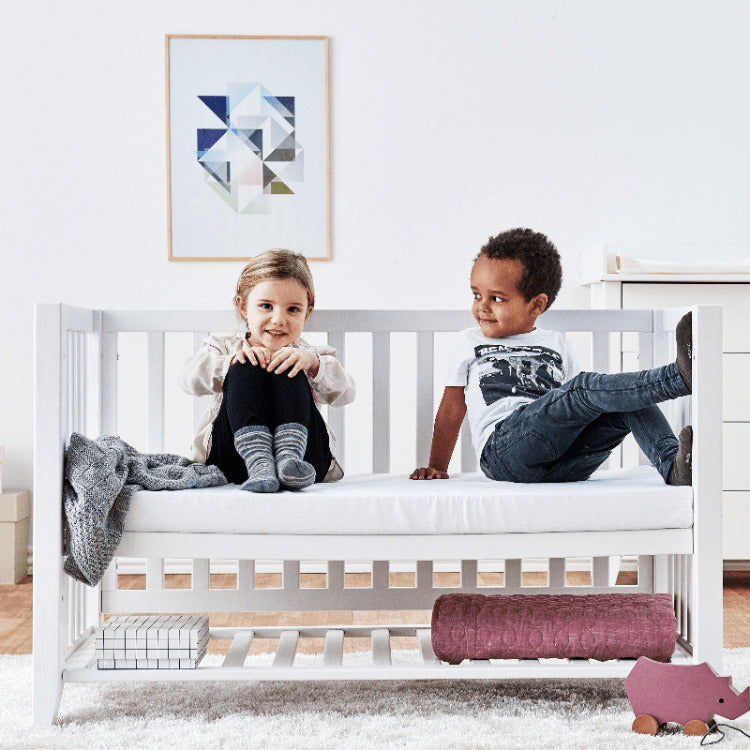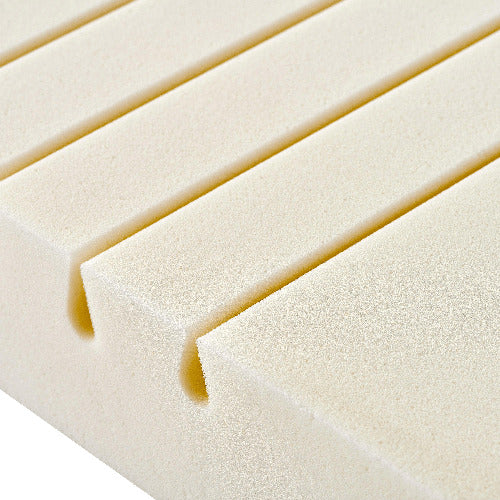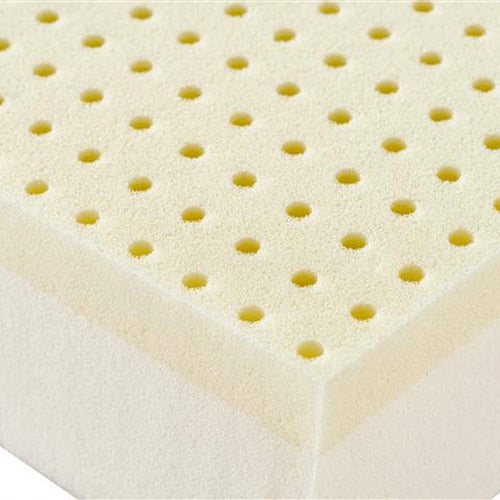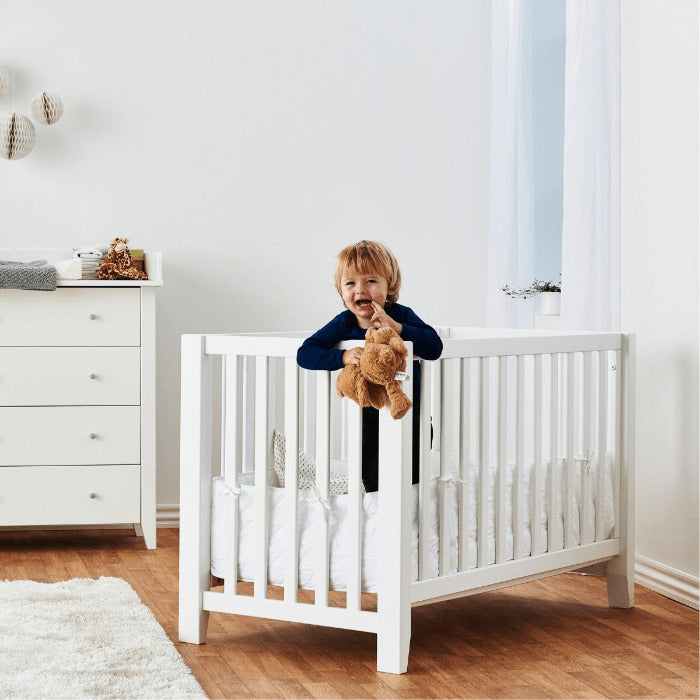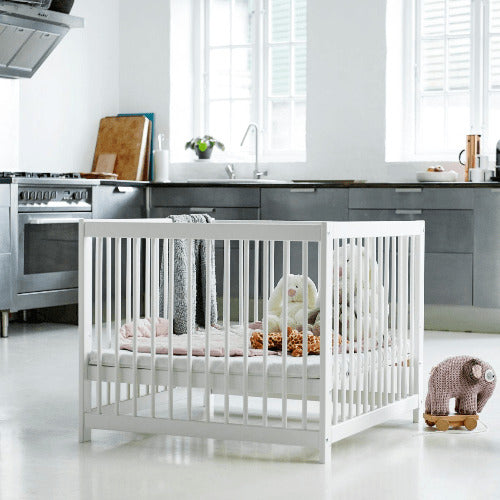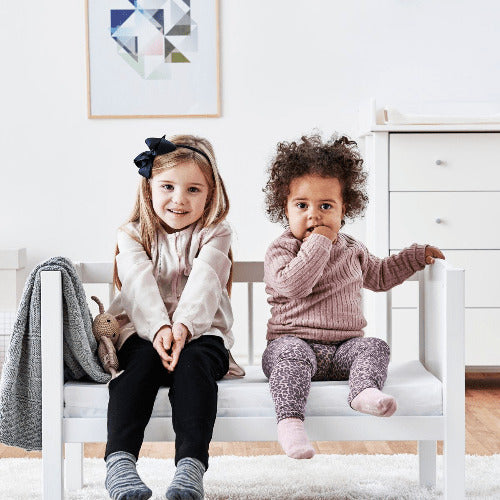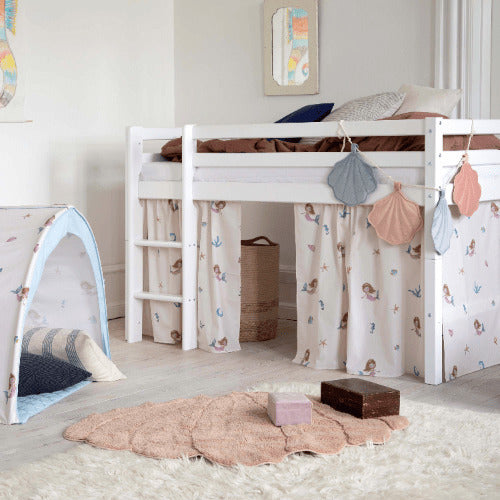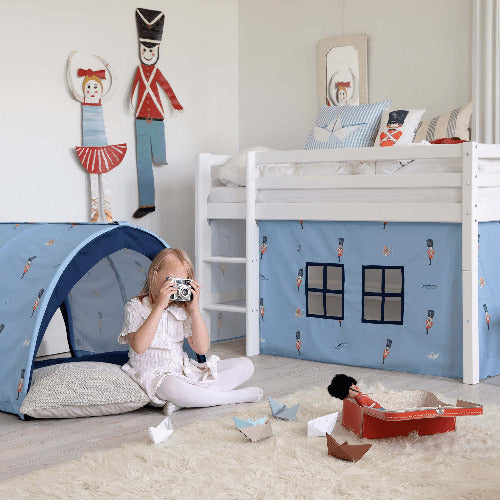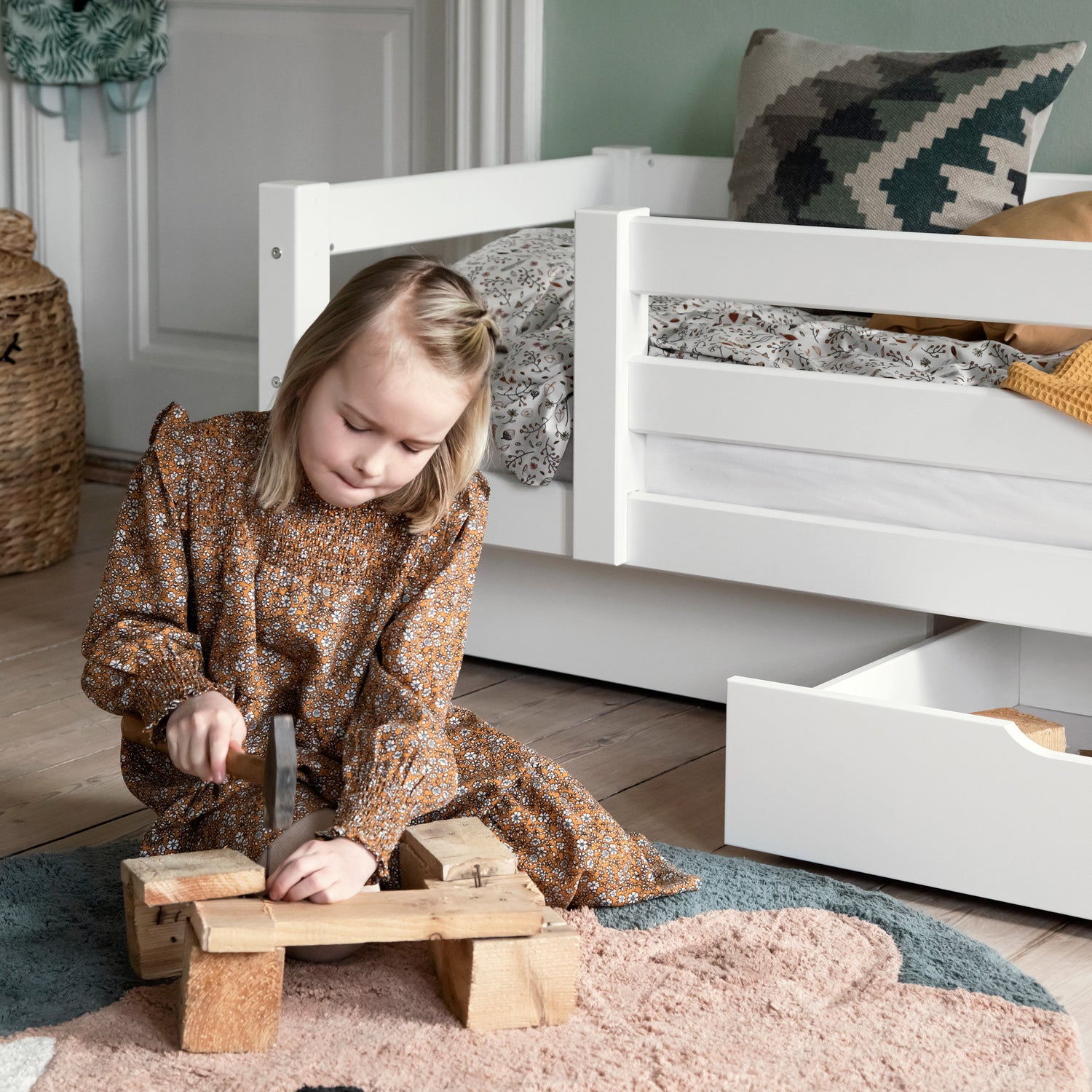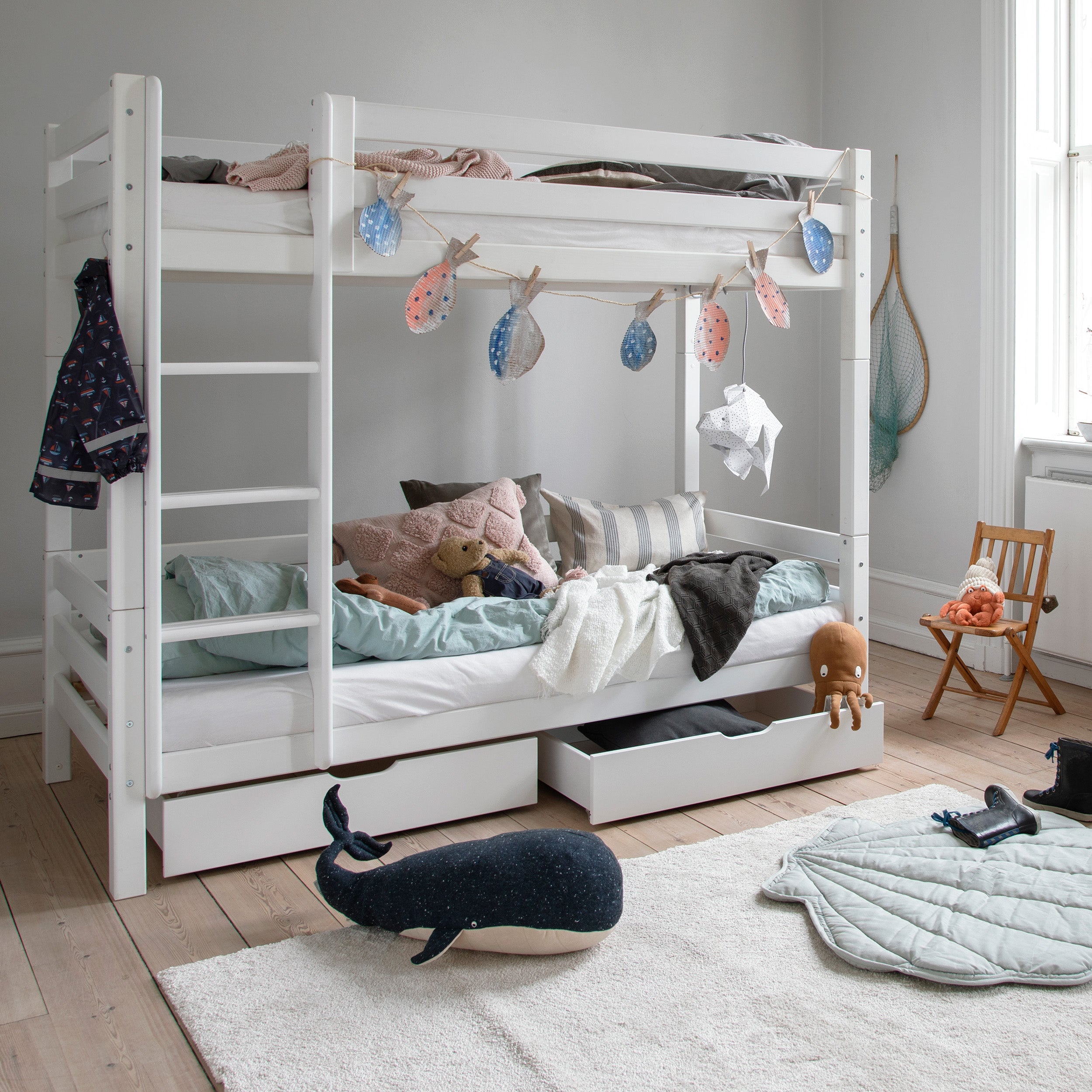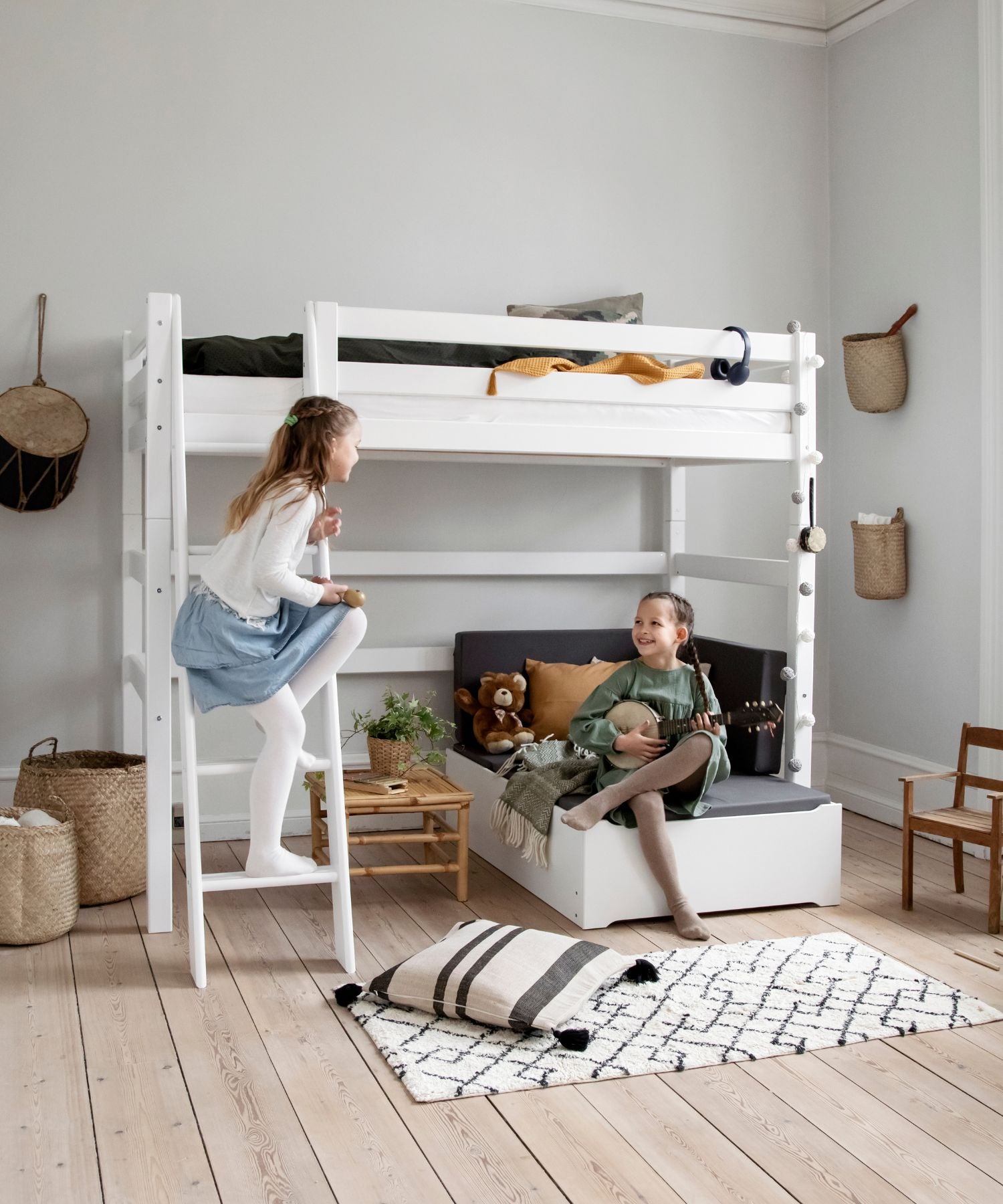Storage in a small children's room
Storage for toys, books, clothes, etc. is essential for any children's room. Especially in a small children's room, clutter can be overwhelming and take up the little extra space available. Therefore, good storage solutions are a must.
If your child has a loft bed, the space underneath is ideal for placing a dresser or stacking boxes with toys. If the bed is closer to floor height, bed rollers or drawers under the bed can be a good idea. Shelves and wall-mounted shelves make use of the height and walls of a room. They are ideal if there is more vertical space than horizontal space. Use the space whether it is in height or width.
Dividing the storage can also be a good idea. When you don't have a lot of space, it can be difficult to keep track of all your belongings. Color-coding or labeling storage boxes can help you keep track of where you've placed the box of LEGO bricks, for example.
"Does he play a lot with trains and race tracks? Then I would never buy wall cabinets with boxes for small items. I would go for large, cool floor boxes with wheels that can be moved and hold all the large pieces for trains and race tracks" - Sine Grenna, mother of 2, interior designer
Large furniture
Should you be careful with large furniture in small rooms, or can you easily make use of their size? This is a discussion that does not have a clear winner. There are advantages and disadvantages to both sides.
In smaller spaces, a large piece of furniture can seem dominating. It can take up much of the already limited space. On the other hand, a large wardrobe, for example, can have multiple functions and provide a lot of storage space - especially vertically.
It can be used for storing clothes with ample shelf space and hangers. It can also be decorated to open up a whole new world of play every time the doors are opened. Large furniture can also be placed differently in the room. They can help create a cozy corner where your child can cuddle, read, or play. So, large furniture can be good for creating 'rooms within the room'.
"Don't be so scared of large furniture in small rooms. You can actually create 'rooms within the rooms' by placing the furniture differently" - Sine Grenaa, mother of 2, interior designer
Small furniture
Small furniture in a small room is definitely a good and logical solution. When space is limited, it makes sense to furnish it with furniture that takes up less space. This way, you ensure as much floor space as possible for adventures and toys that take up space.
The bed is one of the large pieces of furniture that is hard to do without. Therefore, it is worthwhile to think about solutions that optimize the use of floor space. Most children's beds come in multiple sizes. You can choose a bed with a smaller mattress size or consider adding height under the bed to utilize the space for play or storage. A loft bed with storage is a good option for utilizing the space in the room.
Here, high sleeper, loft beds or bunk beds are suitable options. The higher beds usually come with a smaller mattress size, which means double the space saving. Again, consider what kind of child you have. If books and iPads are the most used items, it might be best to create cozy corners with pillows behind a large bookcase.
On the other hand, if the train set and LEGO bricks are most frequently used, you might want to consider smaller furniture and more floor space.

How to design a small room?
Especially in small rooms, it is easier to find space in the upper square meters of the room than in the lower ones. In a small children's room, you have to make full use of the space, and the upper square meters should also be utilized. Shelves and wall-mounted shelves are ideal for vertical storage, and the top of a tall cabinet can also be used for storing things that are not used frequently.
"The key to giving them space is to create space on the floor. So, get things up in height - up on the walls. Get shelves on the walls and get things off the floor" - Annemette Voss, mother of 3, architect
At the same time, tall beds are good solutions for utilizing the forgotten square meters. They elevate themselves and create space underneath. This can easily be transformed into a den, storage space, floor space, or a place to put a desk with drawers, if that is what your child needs.
Quality over quantity
If you furnish with multifunctional furniture, you get more functions in less space. There are countless ways to do this, either with built-in furniture or furniture that can be transformed into multifunctional furniture. For example, a bed that can also be a sofa and a play area, or a bench that also has storage space.
If you decide to build yourself, that can also save space and create more functions in less space. For example, a staircase to the bed made of bookshelves, a bed on top of two dressers, or another creative project. Only your imagination sets the limit. However, we encourage you to prioritize safety, especially when building yourself.
Design that suits your child
No matter the size, the design of the children's room should be tailored to your child. A desk won't be suitable if your child would rather sit and play on a tablet or run around dressed up as a princess. No one knows your child better than you and, of course, the child itself. Therefore, you also know best what their favorite toys are and how they like to spend their time.
Especially in small children's rooms, you can't just throw in any piece of furniture if there is a risk that it won't be used. Therefore, you have to be economical with space and only include the things that bring joy to your child.

Designing with slanted ceilings
Slanted ceilings can often be seen as a challenge, especially in an already small children's room, as it makes it difficult to fully utilize the height of the room. However, slanted ceilings can be disguised as an opportunity because they can help create a cozy and atmospheric space.
The classic solution for slanted ceilings is to place the bed under them, as the child mostly lies down in bed anyway. This is especially advantageous in a slightly narrower room where the bed will take up most of the width of the room. The space created between the bed and the low part of the slanted ceiling is ideal for storage - for example, a built-in cabinet - or a reading nook.
Another option is to place a larger piece of furniture - such as a large dresser or a cabinet - as far under the slanted ceiling as possible. This creates an illusion of a straight wall, but at the same time, a "secret hideout" is created behind the furniture. It can be very cozy under slanted ceilings with a lamp and a few blankets or a low chair. Built-in storage for clothes and toys can also be a solution.
Storage often takes up a lot of space in a room with slanted ceilings because cabinets, etc. prefer to be placed against a straight wall. By creating built-in storage under the slanted ceiling, you can effectively utilize the space and use some of the floor space that might otherwise not be used.
Our 5 best tips for a small children's room
-
Furnish with multifunctional furniture. These save a lot of space because they have multiple functions in one.
-
Take the time to find the right storage solutions. Clutter in a small room can make it seem even smaller.
-
Make use of the height of the room, for example, by using wall-mounted storage or loft beds to create more floor space.
-
Paint the walls with lighter colors that can make the small room feel more open.
-
Arrange the room to suit YOUR child and get rid of all furniture and toys that won't be used anyway.
Bringing colors into the children's room
Most children love colors. Since the room will primarily be used by your child, it may be tempting to paint the wall in their favorite color. There are arguments for and against colored walls. Some believe that colors make the room appear smaller and darker, or that the colors can quickly become overwhelming when there is also colorful toys and accessories.
Others believe that colored walls help create coziness and happiness in the room. A fine alternative to paint or wallpaper can be wall stickers or colorful posters and pictures - or perhaps just one wall in a different color. Another alternative to painted walls is to use colored furniture in the design.
If the dream is a colored bed, use accessories in matching or muted colors. Conversely, neutral walls and furniture can accommodate a multitude of colors in the accessories. Whether you should paint the walls, use colored furniture, or accessories is entirely up to you and your child. Choose the solution that suits you best, but make sure to maintain a balance between calmness and colors.
